As has become our magazine’s custom, for this 2019 edition of Flashback, the seventh edition of the interesting exhibition-market in Turin, which has in the phrase “all art is contemporary” its motto and which offers both ancient and contemporary works of art, we propose the top ten of what we think are the most interesting works you can find at the fair this year. The very rich 2019 edition offered a selection of great quality, of which we give you a brief summary in this article. With a novelty also from our side: for the first time, in one of our “fair” top ten we include all the prices of the works we propose. Happy reading!
Angelo Garino, Interior with nude (1920), presented by Arcuti Fine Art. Request: 90 thousand euros.
A masterpiece of Angelo Garino’s maturity (Turin, 1860 - Nice, 1945), this painting features Tea, Garino’s “muse” at the time in her 60s: she was transgender at the time (these were the same years in which the well-known Danish artist Einar Wegener became a woman and called herself Lili Elbe: the story was told in the very famous film The Danish Girl) and the painter portrays her in a bodoir filled with all kinds of objects and curiosities. “Garino,” wrote art historian Armando Audioli, “Garino immediately leads us into a strictly individual dimension, divorced from the flow of time and history. A psychic dimension, even before the physical.” And the protagonist’s beauty, Audioli further points out, is “a sophisticated, artificial, altered beauty. A giddy beauty precisely because it is unnatural and perverse. [...] A beauty springing from the unresolved conflict with the low prose of everyday life and devoted to a single creed: unconditional faith in an exceptional art.”
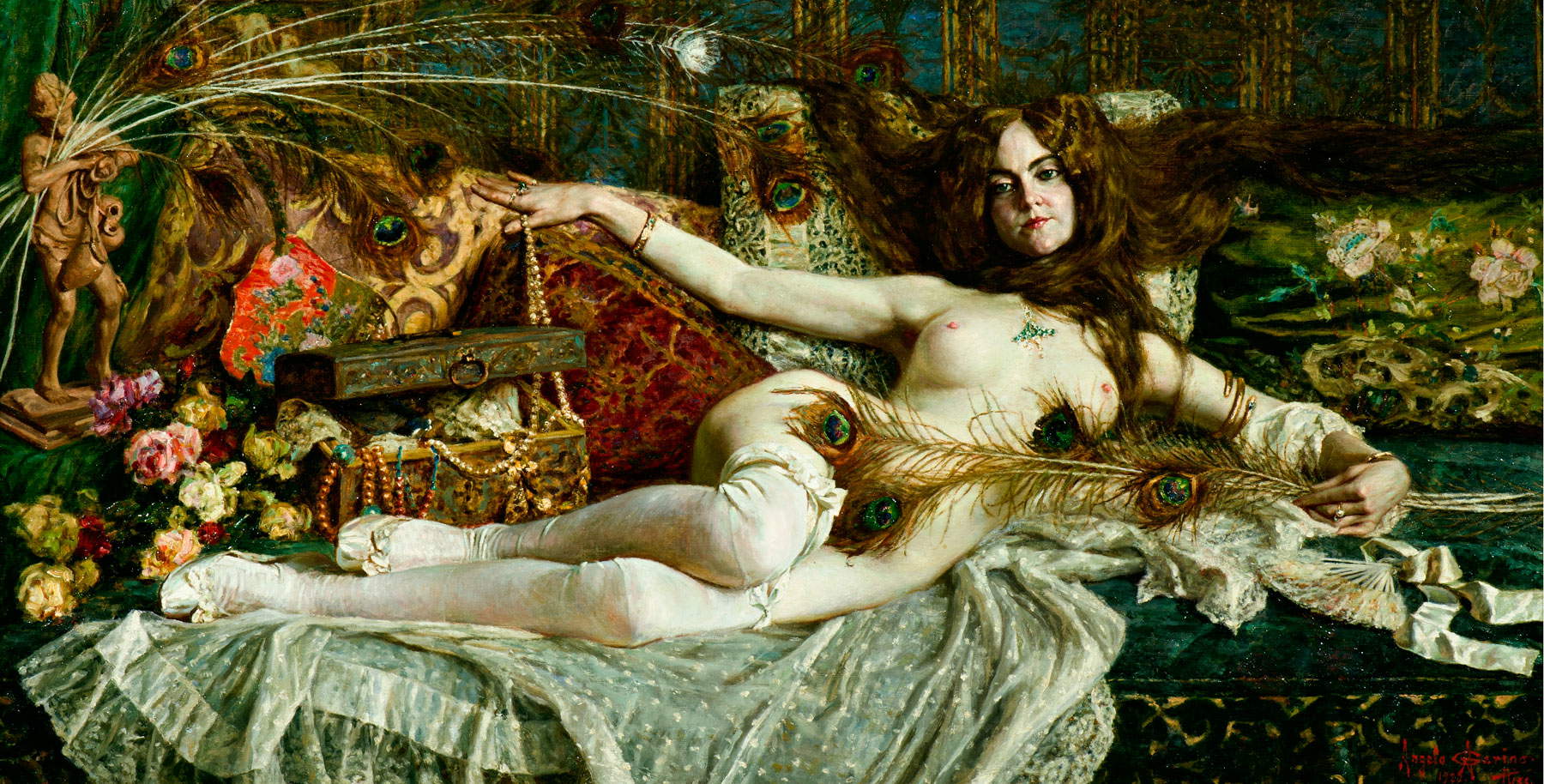 |
| Angelo Garino, Interior with Nude (1920; oil on canvas, 72.5 x 140 cm). Presented by Arcuti Fine Art. Request: 90 thousand euros. |
Thayaht, The Tennis Player (ca. 1935), presented by Galleria Russo. Request: 50 thousand euros.
An interesting example of the sculptural output of Thayaht (Ernesto Michahelles; Florence, 1893 - Pietrasanta, 1959), who began making sculpture beginning in 1920, this work, which depicts a splendid Tennis Player, examines the athletic gesture of the tennis player, attempting to capture his movement (the tennis player, in particular, is here engaged in a backhand). The result is a fluid, sinuous figure endowed with an antimonumental elegance.
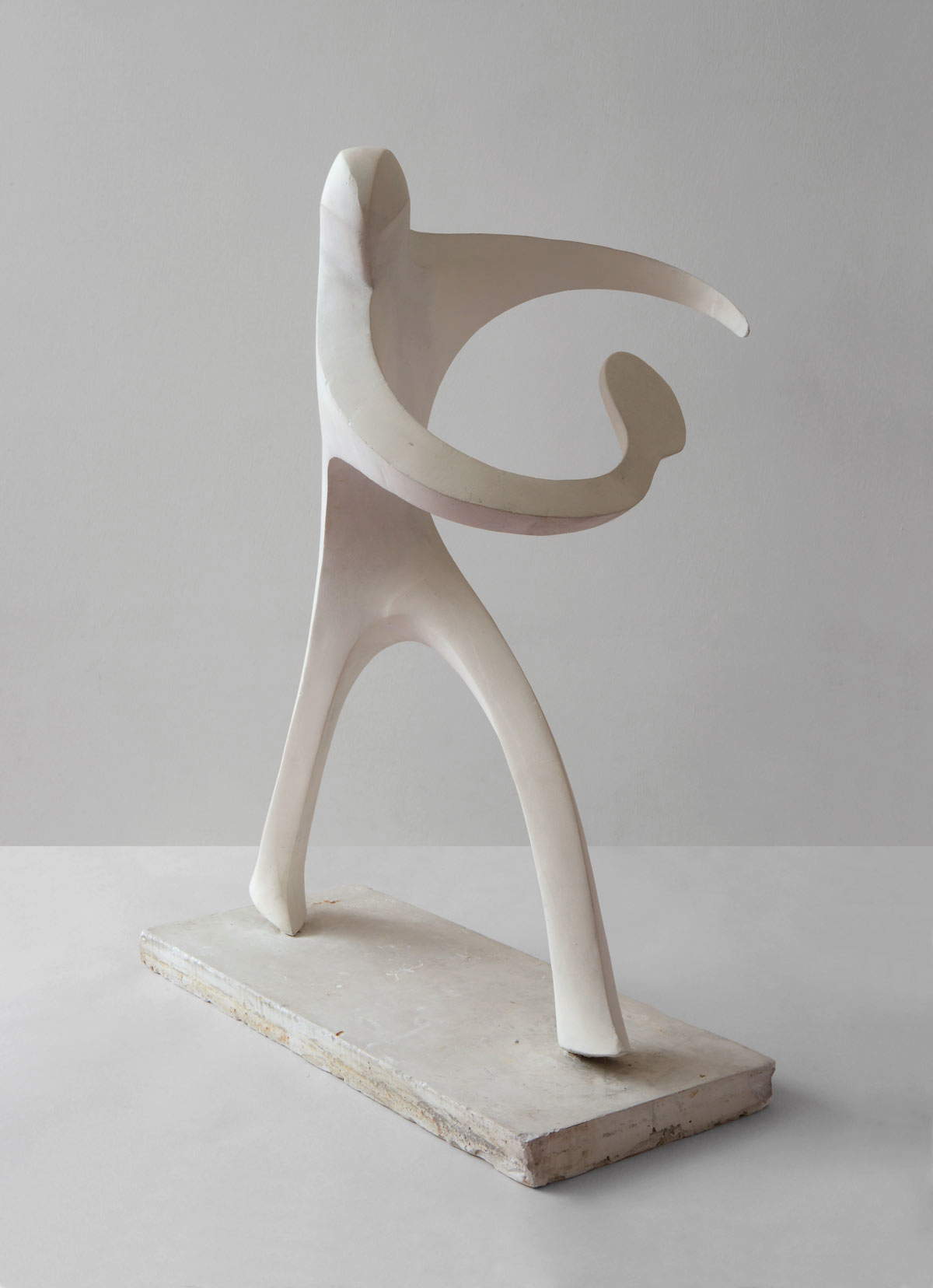 |
| Thayaht, The Tennis Player (ca. 1935; plaster, 71.5 x 43.5 x 57 cm). Presented by Galleria Russo. Request: 50,000 euros. |
Pieter Neefs the Elder and Frans Francken III, Church Night Interior with Figures (1636), presented by Caretto & Occhinegro. Request: 25 thousand euros.
A specialist in views of church interiors, Pieter Neefs the Elder (Antwerp, c. 1578 - 1656/1661) depicts, in this painting, an unusual nocturne set inside a house of worship. Light is provided by candles lit here and there within the aisles: elements that add to the mystical sense that the atmosphere created by Neefs manages to emanate. To paint his scene, Neefs was inspired by the cathedral in Antwerp, his hometown. The figures, however, are to be assigned to the hand of Frans Francken III, who several times collaborated with Neefs. One peculiarity is the fact that the church is unadorned: in the late sixteenth and early seventeenth centuries, a wave of true iconoclasm spread in Flanders and, more generally, in areas where Protestantism was widespread, leading to the destruction of several works. Things would change, however, in the seventeenth century, a time when the blossoming of the arts also invested the churches, which again became populated with works of art.
 |
| Pieter Neefs the Elder and Frans Francken III, Church Night Interior with Figures (1636; oil on panel, 39.4 x 57.7 cm). Presented by Caretto & Occhinegro. Request: 25,000 euros |
RAM, Poppies (1935), presented by Frascione Arte. Request: 25 thousand euros.
This is the sketch for the cover of the magazine Natura, in the June 1936 issue (year “XIV” of the fascist era, as we see in the inscription at lower left). RAM (Ruggero Alfredo Michahelles; Florence, 1898 - 1976), Thayaht’s brother, in an apparently simple work, nevertheless expresses, as scholar Susanna Ragionieri has pointed out, a “variety of accents, as rich and multifaceted as ever,” which provide us with an eloquent idea of RAM’s physiognomy around the mid-1930s. These Poppies, the scholar explains, are characterized by a “vital exuberance” that at the same time denotes "psychological acuity in the frank and passionate exaltation of a fragile and soon-to-be wasted beauty, which seems to determine the overflowing red of the Poppies from the cover frame."
 |
| RAM, Poppies, sketch for the cover of Nature, June 1936 (1935; oil on plywood panel, 53 x 41 cm). Presented by Frascione Arte. Request: 25,000 euros |
Pasquale Ottino, Saint Jerome and Escape to Egypt (c. 1590-1600), presented by Il Mercante delle Venezie. Request: 20 thousand euros the pair.
Two small but valuable early works by Pasquale Ottino (Verona, 1578 - 1630), who was to become one of the leading exponents of Caravaggesque painting in Verona. They are two youthful works, made according to the traditional Veronese technique of oil on paragone: that is, they are painted on small slabs of black slate (called “paragone stone” because of its similarity to the material with which gold was tested in ancient times) that give the scene, at the same time, characteristics of extraordinary brilliance and the somber background that many of the artists of the time sought. Pasquale Ottino would have moved to Rome, where he would have learned the novelties of Caravaggesque art, in the early seventeenth century: in this pair of paintings, however, he is still tied to a sixteenth-century style of painting, but one capable of achieving high levels of refinement.
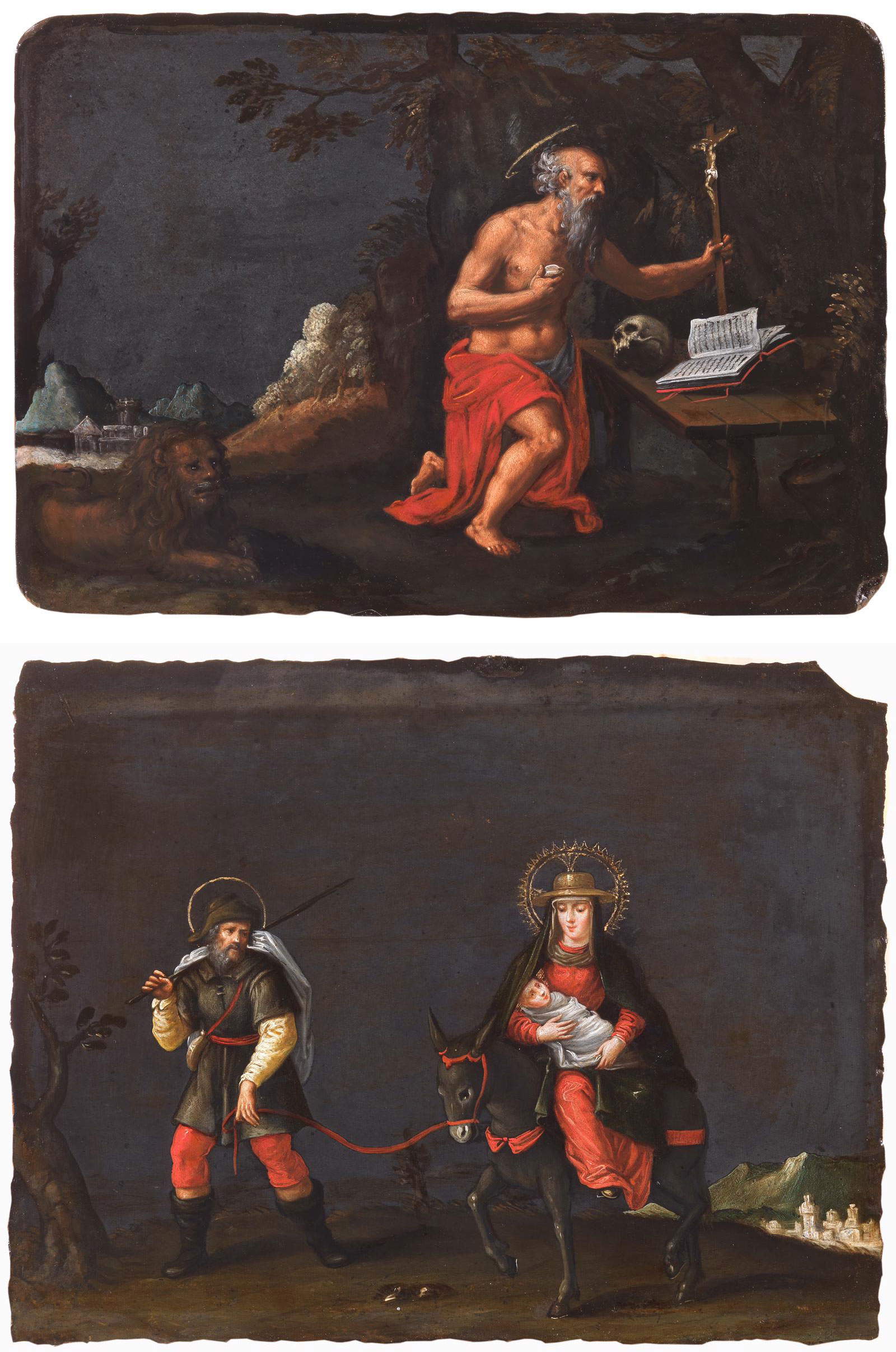 |
| Pasquale Ottino, Saint Jerome and Escape to Egypt (c. 1590-1600; oil on slate, 20 x 30 cm each). Presented by Il Mercante delle Venezie. Request: 20,000 euros the pair |
Pino Pascali, Rhinoceros and Giraffe (1964), presented by Campaiola. Request: 13 thousand euros.
“Nature? It’s a scary word. For example, if you look at this rhinoceros, it is certainly a rhinoceros, it is a form that I looked for without looking for it; I did not make it so that it would be structured according to the form of a rhinoceros, but nevertheless I did not disdain other factors and of this form I saved what could have been. It may be that in this realization there are solutions that are not mine, that are other sculptors’, that reveal other ways of thinking.” The figure of the rhinoceros is often present in the work of Pino Pascali (Bari, 1935 - Rome, 1968), which in this conversation excerpt, in which the artist was talking with critic Carla Lonzi, becomes a kind of symbol of a certain way he understood art: not as a repertoire of forms, but as a way of investigating nature (although, Pascali said in the same conversation, he could not explain what he meant by “natural”). Campaiola’s proposed work, from the collection of Sandro Lodola’s collector, has participated in some of the Apulian artist’s exhibitions in the past.
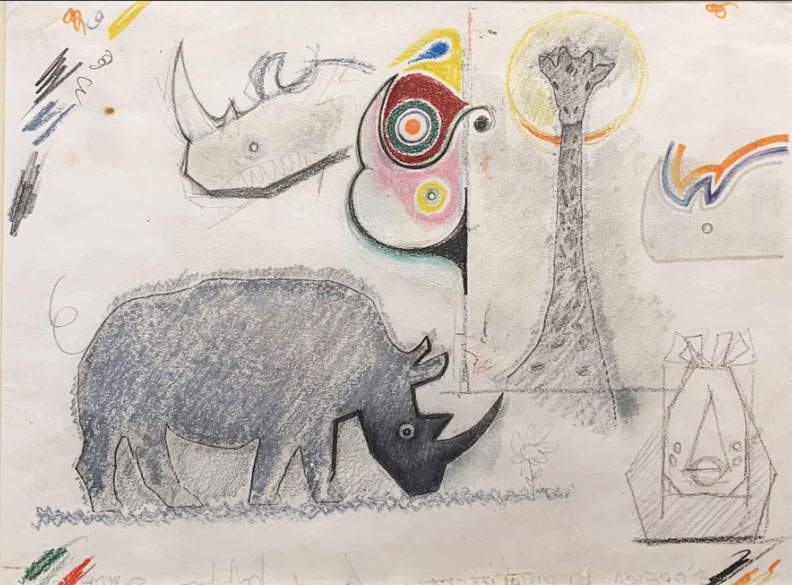 |
| Pino Pascali, Rhinoceros and Giraffe (1964; mixed media on paper, 22 x 28 cm). Submitted by Campaiola. Request: 13,000 euros. |
Aldo Mondino, D’après Millet (1984), presented by Biasutti&Biasutti. Request: 12 thousand euros.
In this tempera on paper, Aldo Mondino (Turin, 1938 - 2005), reinterprets one of Jean-François Millet’s masterpieces, the Sower, a great masterpiece by the French artist who was also appreciated and copied by Vincent van Gogh. Mondino nurtured a strong interest in nineteenth-century realism, which is expressed here with a direct quotation: however, this was not the only time Mondino referred to Millet’s art. The Turin-based artist revisits Millet through the expanded volumetries that characterize many of his characters, with a much reduced color palette (only white, red and blue appear: perhaps it is all too easy to find in this a homage to the nationality of the artist of reference) and with a strong sense of movement.
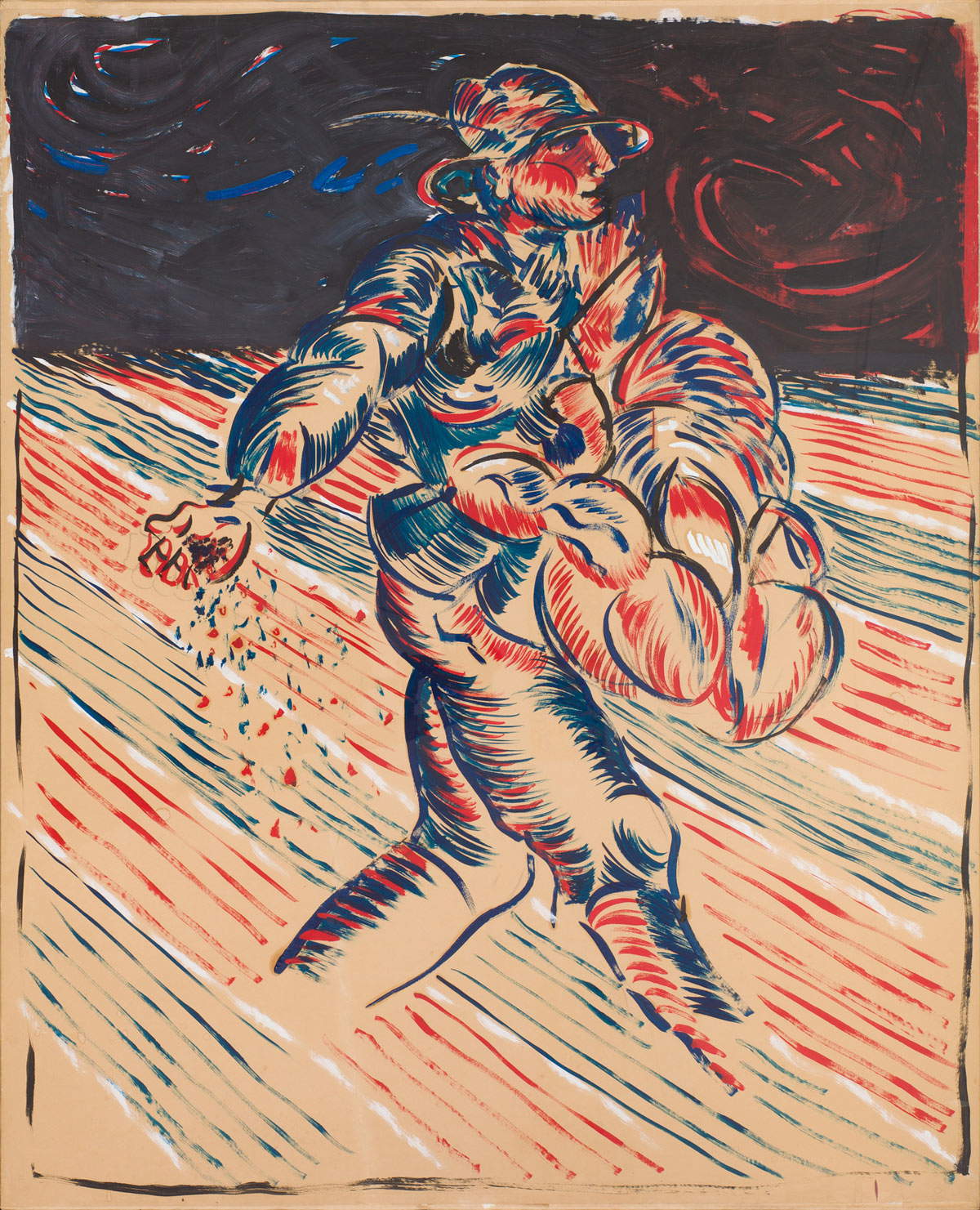 |
| Aldo Mondino, D’après Millet (1984; tempera on paper, 120 x 100 cm). Presented by Biasutti&Biasutti. Request: 12,000 euros. |
�?shima Joun, Frogs in Struggle (1920), presented by Gilistra. Request: 3,800 euros.
�?shima Joun (Tokyo, 1858 - 1940) was one of the greatest Japanese sculptors active at the turn of the 19th and 20th centuries, a specialist in bronze sculpture, a field in which he was at the time one of the leading masters. During his career he was also able to achieve international fame: in 1900 he also won first prize at the Universal Exhibition in Paris. The work Gilistra is presenting at Flashback is an okimono, that is, a sculpture that had exclusively decorative functions: the repertoire of okimonos was very varied (partly because they were objects that had no practical function), and in this case the subject is a bizarre fight between two frogs. The work is sold with its original tomobako, or wrapping, the typical wooden case.
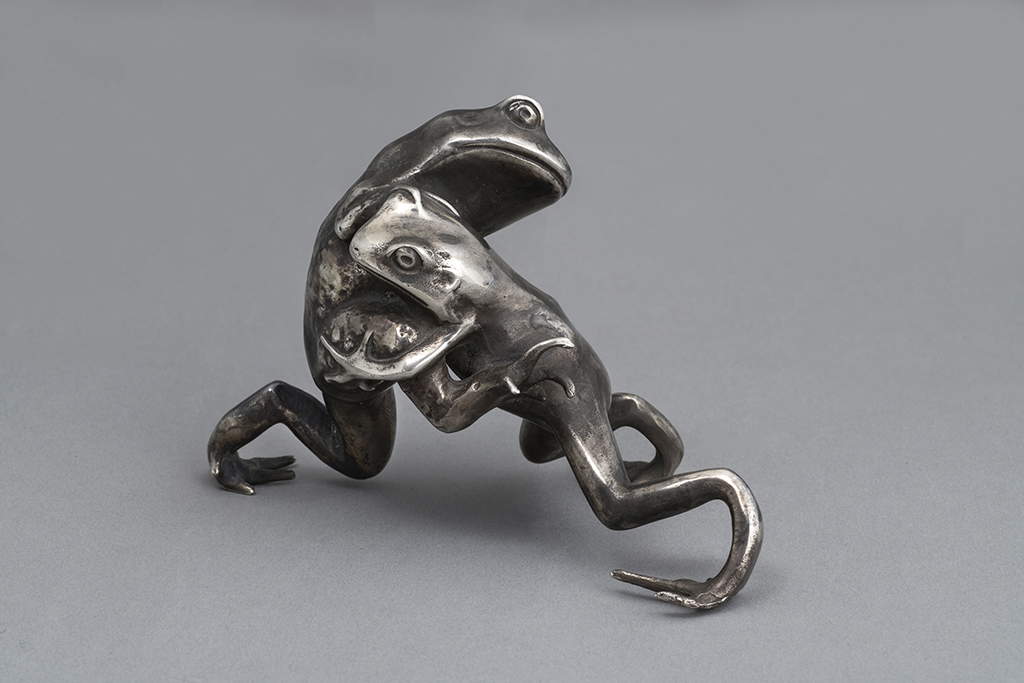 |
| �?shima Joun, Fighting Frogs (1920; silver, diameter 8.5 cm). Presented by Gilistra. Requested: 3,800 euros. |
Warning: the translation into English of the original Italian article was created using automatic tools. We undertake to review all articles, but we do not guarantee the total absence of inaccuracies in the translation due to the program. You can find the original by clicking on the ITA button. If you find any mistake,please contact us.